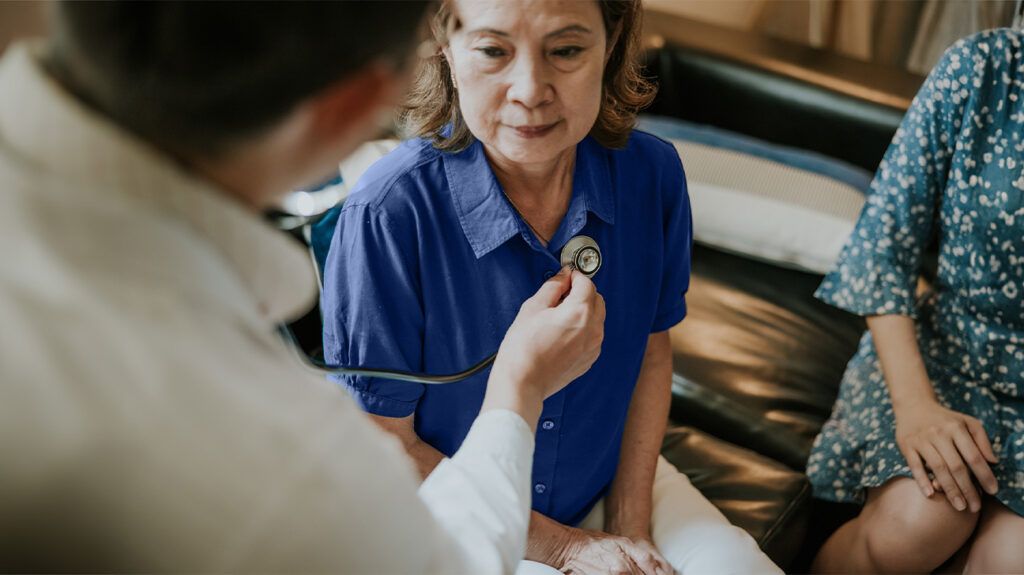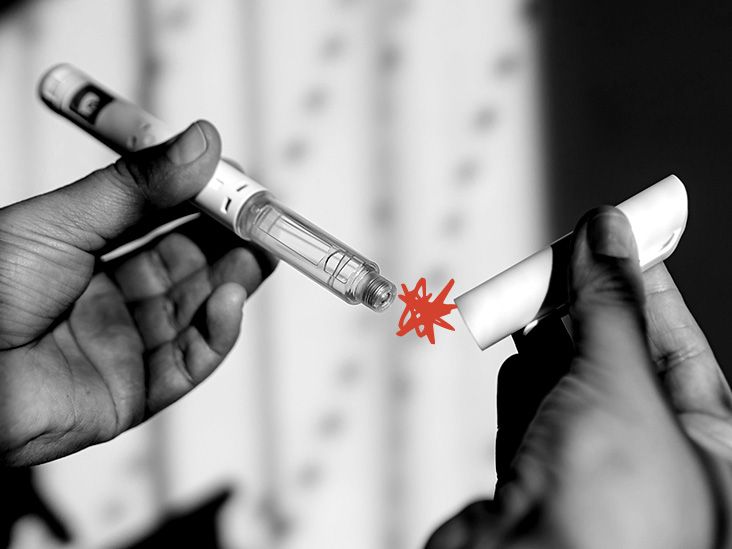Medicare covers many expenses associated with lung cancer care to support a person both financially and emotionally. It also covers one lung cancer screening each year for eligible members.
Doctors customize lung cancer treatment depending on the type of lung cancer a person has and other factors.
There may be some out-of-pocket costs based on the part of Medicare covering the care.
This article discusses lung cancer, Medicare benefits, and some of the out-of-pocket expenses that may apply.
Glossary of Medicare Terms
We may use a few terms in this piece that can be helpful to understand when selecting the best insurance plan:
- Deductible: This is an annual amount that a person must spend out of pocket within a certain time period before an insurer starts to fund their treatments.
- Coinsurance: This is a percentage of a treatment cost that a person will need to self-fund. For Medicare Part B, this comes to 20%.
- Copayment: This is a fixed dollar amount that an insured person pays when receiving certain treatments. For Medicare, this usually applies to prescription drugs.

Medicare Part B covers one lung cancer screening each year under certain circumstances.
To be eligible for a yearly lung cancer screening with no out-of-pocket expenses, a person must:
- be between 55-77 years of age
- not have signs or symptoms of lung cancer
- be a current smoker or have quit within 15 years
- have smoked an average of one pack (20 cigarettes) per day for 30 years
- have an order from a doctor
The screening test is known as a low dose computed tomography (LDCT) scan. LDCT scans, originally approved in 2015 as a lung cancer screening, may help find lung cancer early, which could create a positive outlook.
Like all radiological tests, there is some risk to low dose radiation. The test has up to a 14 percent false-positive reading. This means the test may say there is lung cancer when there is not.
If the LDCT scan result is positive, a doctor may recommend more tests and ask for an annual LDCT screening test.
Read more about lung cancer screening guidelines.
Medicare has different parts, some of which private insurance companies administer. Most parts cover lung cancer care.
- Medicare Part A is also called hospital insurance. It pays for expenses when a person with lung cancer stays in a hospital, skilled nursing facility, or hospice, and may also cover some home healthcare.
- Medicare Part B is also called medical insurance and covers many of the lung cancer treatments provided outside of the hospital.
- Medicare Part C, also known as Medicare Advantage, is a bundled plan administered by private insurance companies that combines the benefits of Medicare Parts A and B into one policy. Many plans also cover prescription drug benefits.
- Medicare Part D is also called a prescription drug plan (PDP). Also administered by private insurance companies, the plans cover many outpatient medications that treat lung cancer.
PDPs are available to those with Original Medicare only, as most Medicare Advantage plans already include coverage for prescription drugs.
Medicare supplement insurance is called Medigap. Private insurance companies administer this policy, to help fill gaps in Medicare Parts A and B. A person cannot have a Medigap and a Medicare Advantage plan at the same time.
Read about Original Medicare vs. Medicare Advantage.
Lung cancer starts in the lungs when the cells change and begin to grow uncontrollably. Cells in the lungs may change for several reasons, such as exposure to dangerous chemicals.
There are two main types of lung cancer:
- Small cell lung cancer: This is typically associated with cigarette smoking. Chemotherapy is a
common treatmentTrusted Source for this type of lung cancer. - Non-small cell lung cancer: This is a more common type of lung cancer. It is also slower to grow.
Under a microscope, a doctor will look for biomarkers and may find more information that can help build a treatment plan.
Biomarkers check for changes in a person’s DNA and can give important information about treatments that may work. Treatment is then customized to the person since no two lung cancers are the same.
The most significant risk of lung cancer is smoking. Other things that raise the chance of developing lung cancer are air pollution and radon.
Lung cancer resources
Visit our dedicated hub for more research-backed information and in-depth resources on lung cancer.
Some of the treatments available for lung cancer include:
- Surgery: This option may only be suitable for a small number of people who have lung cancer. Surgery involves removing part or all of one lung.
- Chemotherapy: Chemotherapy kills cancer cells, relieves symptoms, or shrinks a tumor before a surgical procedure occurs.
- Radiation: There are different types of radiation treatment. Some stop cancer growth, and others help relieve symptoms.
- Targeted therapy: This treatment works on certain types of lung cancer and uses drugs to stop the growth or spread of lung cancer.
- Immunotherapy: During immunotherapy, medicines help a person’s immune system recognize and kill cancer cells.
- Clinical trials: These are new treatment options for those who are willing to try something new. Anyone who would like to take part can
search for a clinical trialTrusted Source through the National Cancer Institute. - Complementary medicine: These are treatments used in addition to standard treatments. They can include hypnosis, acupuncture, or dietary supplements.
- Alternative medicine: These treatments are used instead of standard therapy. They can include diet and herbs.
Medicare coverage for treatment
Medicare pays formedically necessary and approved treatments. If a person chooses to use complementary or alternative therapy, they may be required to pay out of pocket.
Clinical trials relating to cancer do not pay people to participate. Medicare covers some costs and services in specific trials.
Out-of-pocket costs for Medicare treatment will generally only include an individual’s usual premiums, copays, and coinsurance. Medicare offers full coverage for most aspects of cancer care, treatment, and support.
After a lung cancer diagnosis, Medicare Parts A and B cover many of the medically necessary benefits.
Medicare Part A coverage includes:
- treatment a person receives while an inpatient in the hospital
- skilled nursing facility care after meeting the 3-day related hospital stay requirement
- hospice care
- blood work
- cost of some clinical research studies while in the hospital
- home healthcare
- rehabilitation services such as
- physical therapy
- occupational therapy
- speech and language therapy
- skilled nursing care
In some cases, a person may be in the hospital but considered an outpatient. This is called observation status. Medicare Part A does not pay for these services, but Part B may provide coverage.
Medicare Part B coverage includes:
- doctor visits
- durable medical equipment (DME)
- many intravenous or oral chemotherapies given in a clinic or doctor’s office
- radiation therapy
- tests to diagnose lung cancer, such as X-rays or CT scans
- outpatient surgeries
- mental health services
- some costs of clinical research as an outpatient
- a second or third opinion on surgery that is not an emergency
- a feeding pump prescribed by the doctor when a person cannot eat or absorb the required nutrition through their intestines
Medicare works with healthcare practices to provide coordinated care through the Enhancing Oncology Model. The program helps provide person-focused quality care to people with cancer, such as:
- a personalized care plan that addresses a person’s specific healthcare needs
- a health professional available to answer questions 24 hours each day
- help coordinating care with healthcare professionals and community organizations
- financial, emotional, and social support services
The American Lung Association offers many helpful resources, and a person may find information on financial assistance programs and local support groups.
Medicare resources
For more resources to help guide you through the complex world of medical insurance, visit our Medicare hub.
Medicare Parts A and B help pay medically necessary expenses related to a lung cancer diagnosis, treatment, and care.
A person can take a LDCT test yearly to screen for lung cancer. There is no charge to those who are eligible.
Medicare helps pay for treatments inside and outside of the hospital. They also pay for some clinical trials.
Medicare Advantage and Medigap may offer financial help to cover treatment costs and other organizations, such as The American Lung Association, offer other types of support.


